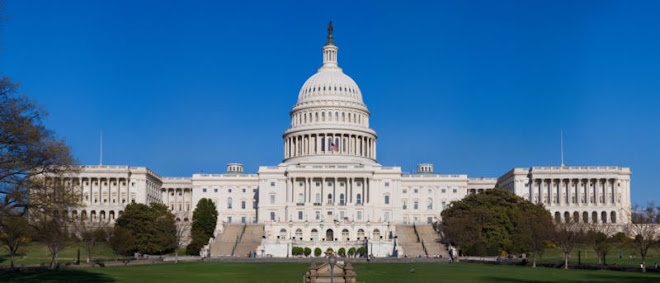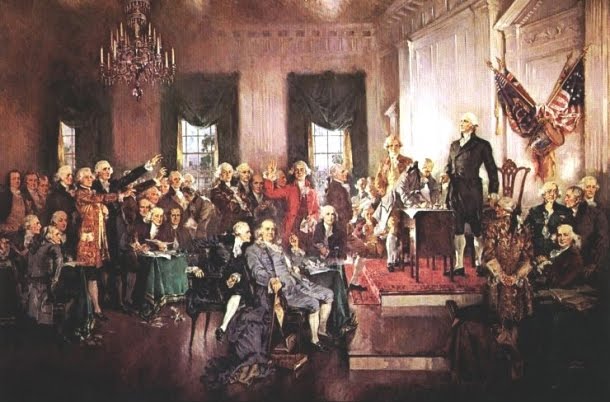
Hans A. von Spakovsky
Archive
Latest
Log In
February 23, 2011 12:00 A.M.
Abusing the Voting Rights Act
Thanks to the Obama Justice Department, redistricting may touch off contentious court battles over the rule of law.
Listen to the Audio Version
The redistricting process for congressional and state-legislative seats will soon begin in earnest. All redistricting plans must meet the “one person, one vote” equal-protection standard established by the Supreme Court, which means that districts are supposed to be as even in population as possible.
But redistricting also must comply with the Voting Rights Act, and the Justice Department’s Civil Rights Division just released its new “Guidance Concerning Redistricting Under Section 5 of the Voting Rights Act.” This guidance, which affects redistricting in all or parts of 16 states, is almost guaranteed to cause problems for Republicans.
- - - - - - - - - - - - - - - - - - - - - - - - - - - - - - - - - - - - - - - - - - - - - - - - -
ADVERTISEMENT
- - - - - - - - - - - - - - - - - - - - - - - - - - - - - - - - - - - - - - - - - - - - - - - - -
When the Voting Rights Act was enacted in 1965, Section 5 was supposed to be a temporary, emergency provision. It prohibits certain jurisdictions from implementing any change in their voting laws unless those changes are pre-cleared by the Justice Department or approved by a three-judge panel in federal court in Washington. This 45-year-old “emergency” provision has been renewed four separate times, most recently in 2006. That renewal gave the section 25 years of new life, despite a complete lack of evidence that the type of systematic discrimination that led to its initial passage still exists. Indeed, Congress even changed the Section 5 legal standardto make it easier for the Justice Department to cause mischief.
And as we see in the new guidance memo, DOJ seems intent on doing just that. Jurisdictions covered under Section 5 — all of Alabama, Alaska, Arizona, Georgia, Louisiana, Mississippi, South Carolina, Texas, and Virginia, and parts of California, Florida, Michigan, New Hampshire, New York, North Carolina, and South Dakota — now have the burden of proving that their redistricting plans were adopted “free of any discriminatory purpose” and will not have any “discriminatory effect.”
Historically in U.S. jurisprudence, the government has the burden of proving guilt. But Section 5 has always had a different requirement: The states have to prove they are innocent. This poses problems when combined with a standard as vague and nebulous as “discriminatory purpose.” Let’s assume a Section 5 jurisdiction submits a new redistricting plan. Even in the absence of any evidence that the plan would have a discriminatory effect or would in any way inhibit the ability of minority voters to elect their candidates of choice, DOJ could deny pre-clearance if it found “direct or circumstantial evidence” of a “discriminatory purpose.”
This new standard seems designed to make it easier for Justice attorneys to label covered jurisdictions as racist. That is a dangerous thing. During my service as a career attorney in the Civil Rights Division, I found that nearly all the lawyers and staff involved in Section 5 determinations see nefarious racial agendas — i.e., discriminatory purpose — lurking at every corner.
Recent testimony before the U.S. Commission on Civil Rights by DOJ whistleblowers Christian Adams and Christopher Coates confirms that attitude still prevails. The new redistricting standards will let the misguided careerists at Justice impose their worldview on Section 5 jurisdictions with little or no proof of actual discrimination.
The guidance also provides a heckler’s veto to any minority state legislator unsatisfied with a new redistricting map; such a legislator can now simply cry “racism,” thereby causing the map to suffer from a fatal Section 5 “discriminatory purpose” defect. Today, lone cries of racism are often (although not always, of course) totally baseless. But one can count on the ideologues in the Voting Section to accept every cry as legitimate.
How will this play out in the real world? Here’s my prediction. Democratic-drawn redistricting plans will nearly always be rubber stamped by this Justice Department, unless local black or Hispanic Democrats don’t like how their white Democratic colleagues have sliced the pie. Republican-drawn plans, meanwhile, will run into a buzz saw of Voting Section opposition based not on the legal standards set forth under Section 5, but on whether the Section’s lawyers think the plan will hurt or help Democratic candidates. As the Fort Worth Star-Telegram reports, “Democrats are looking toward the Justice Department in President Barack Obama’s administration to serve as a counterweight” to Republican control of the redistricting process in Texas.
Doubt this will happen? Just look at how Justice blocked Kinston, N.C., from switching from partisan to nonpartisan city-council elections. Justice’s rationale? Minorities wouldn’t know whom to vote for if candidates’ Democratic-party affiliation didn’t appear next to their names on the ballot. Or look at the Miller v. Johnson Section 5 redistricting case, which went all the way to the Supreme Court. A federal court excoriated the Division’s handling of this one, calling it “disturbing” and “an embarrassment” because Justice lawyers were taking their orders directly from the ACLU. Justice not only lost that case, it was forced to pay almost $600,000 in costs and attorneys’ fees to the state of Georgia.
- - - - - - - - - - - - - - - - - - - - - - - - - - - - - - - - - - - - - - - - - - - - - - - - -
ADVERTISEMENT
- - - - - - - - - - - - - - - - - - - - - - - - - - - - - - - - - - - - - - - - - - - - - - - - -
Even worse is the fact that the guidance memo says that Justice will develop its own “illustrative alternative plans for use in its analysis.” In other words, the Democratic political appointees who run the Justice Department will draw up their own redistricting plans. They’re certainly prepared to do that. Sam Hirsch, who was once the Democratic party’s main redistricting lawyer, is now a deputy associate attorney general.
The guidance says that if a state submits a plan that’s not (in the opinion of Justice lawyers) as good as the plan concocted internally at Justice, then “the Attorney General will interpose an objection.” In other words, the Justice Department will use its law-enforcement power under the Voting Rights Act to force states to implement the redistricting plans drawn up by the Obama administration, despite the fact that nothing in the law allows them to do this.
The lesson here is that Republican-controlled legislatures that have drawn up redistricting plans that Democrats don’t like would be foolish to submit those plans to the Civil Rights Division for administrative review. Instead, they should go straight to the federal district court in D.C., the alternative procedure set forth in the Voting Rights Act.
States must understand that they cannot expect to get an impartial hearing from this Justice Department. They may still get a panel of liberal judges in federal court, but at least normal evidentiary standards will apply. In court, DOJ will have to provide actual evidence of discrimination — not the rank hearsay and imaginary evidence often considered in its own administrative review. Moreover, states will be able to cross-examine their accusers in court. That doesn’t happen in the administrative setting. Indeed, the Justice Department often refuses to even tell states who has accused them of discrimination in their redistricting process.
Justice also almost never shares its actual internal analysis with a submitting jurisdiction, leaving states completely in the dark about the real reasons for an objection. But it would have to produce that analysis in a courtroom. A DOJ lawyer told me that states often think it will be cheaper to go the DOJ administrative-clearance route instead of going straight to federal court. But, that lawyer said, once the Justice Department objects, “the jurisdiction better be prepared to spend lots of money and expect long delays before they may be able to put their chosen plan into effect.”
The bottom line is this: The Holder Justice Department’s opposition to race-neutral enforcement of the law over the last two years suggests that redistricting may touch off contentious court battles over the rule of law. Unless states opt to bypass DOJ and go straight to federal court, the Left’s effort to exploit the Voting Rights Act for crass political purposes may reach a degree of success once thought unimaginable.
— Hans A. von Spakovsky is a senior legal fellow at the Heritage Foundation and the former counsel to the assistant attorney general for civil rights at the Justice Department.










No comments:
Post a Comment